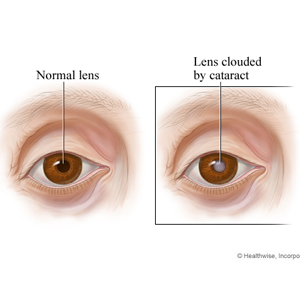Strabismus, also known as squint, is a condition where both eyes look at different directions at a time. In simple terms, the eyes lack coordination and mostly occur in children but can also develop in older kids and in adults as well. In this condition, if one eye is looking straight then the other eye can turn inwards (towards the nose) also known as Esotopia, outwards (away from nose) Exotropia or upwards and downwards (hypertropia).
Six muscles (extra-ocular muscles) around the eye are responsible for coordinating the movement of eyes. A normal person’s vision, both eyes aim at the same object, helping the brain to combine the two pictures received from two eyes in a single 3-D image, giving the perception of depth.
When one eye goes out of alignment in squint, two different pictures are sent to the brain, here the brain “learns” to ignore the image from the non-aligned eye, losing the perception of depth in child. But in adults, the brain has already learnt to receive two images and cannot ignore the image from misaligned eye and due to this adult develop double vision.
CAUSES OF SQUINT AS THE STUDIES SHOWS BY BEST EYE HOSPITAL IN CHANDIGARH
- Strabismus develops when there is a problem which interferes with controlling and functioning of extraocular muscles.
- Disorders affecting the brain can cause squint like cerebral palsy, drown syndrome, brain tumors, hydrocephalus, etc.
- A cataract, diabetes, eye injury or tumor in eye causing vision problems can also be responsible for wandering eye.
- Damage of retina in premature babies or a hemangioma near the eye area during infancy can cause this issue as well.
- Genes can also play crucial role in developing squint.
- It can occur when a children with uncorrected farsightedness tries to focus, they can develop accommodative esotropia happing due to excessive effort.
TYPES OF SQUINT BY BEST EYE SURGEON IN CHANDIGARH
Convergent Squint
In convergent squint, the deviating eye is directed inwards (towards the nose) also known as Esoptropia.
Convergent Squint Symptoms
- Easily noticeable by others,
- Self noticed while looking into the mirror,
- The vision can be less in some cases as compared to others,
Paralytic Squint
Best Eye Specialist in Chandigarh states that paraslytic squintis a type of squint where the eye is enable to move due to muscle paralysis:
Symptoms of paralytic paralysis
- Double vision which can be compensated with closing the eyelid of the defected eye,
- Giddiness
Squint prevention
Early detection is very important, all children between the age of 3 months to 3 years old should get their vision checked. Or if the family has the history of strabismus or amlyopia, the child’s eyesight should be checked even before the age of 3 months.
Tests for Squint
Apart from the standard ophthalmic examination, there are other eye tests like:
- Retinal examination
- Visual acuity testing
- Corneal light reflex
- Cover/uncover test
- Brain and nervous system testing
Squint Treatment
Amblyopia or lazy eye needs to be treated first and there are many techniques prescribed by Best Eye Specialist in Chandigarh which are helpful enough
- Patching the good eye to train the weaker eye by working harder,
- In case, crossed eye do not corrected, eye muscle surgery is indicated (different eye muscles are made stronger or weaker)
- Adults with mild squint which is not constant can be corrected with eye exercises and glasses (severe cases needs surgery)
- Botox or botulinum toxin stops muscles from working and cannot be injected directly into eye muscles for certain types.
Squint is treatable by exercises and glasses as per the Best Eye Specialist in Chandigarh and in some cases surgery is recommended where the severity is more.

